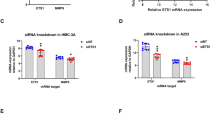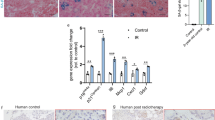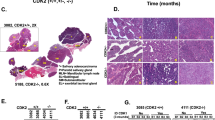Abstract
In 2012, we reported that 5 out of 11 subjects in a clinical trial (NCT00372320) administering AdhAQP1 to radiation-damaged parotid glands showed increased saliva flow rates and decreased symptoms over the initial 42 days. AdhAQP1 is a first-generation, E1-deleted, replication-defective, serotype 5 adenoviral vector encoding human aquaporin-1 (hAQP1). This vector uses the human cytomegalovirus enhancer/promoter (hCMVp). As subject peak responses were at times much longer (7–42 days) than expected, we hypothesized that the hCMVp may not be methylated in human salivary gland cells to the extent previously observed in rodent salivary gland cells. This hypothesis was supported in human salivary gland primary cultures and human salivary gland cell lines after transduction with AdhAQP1. Importantly, hAQP1 maintained its function in those cells. Conversely, when we transduced mouse and rat cell lines in vitro and submandibular glands in vivo with AdhAQP1, the hCMVp was gradually methylated over time and associated with decreased hAQP1 expression and function in vitro and decreased hAQP1 expression in vivo. These data suggest that the hCMVp in AdhAQP1was probably not methylated in transduced human salivary gland cells of responding subjects, resulting in an unexpectedly longer functional expression of hAQP1.
This is a preview of subscription content, access via your institution
Access options
Subscribe to this journal
Receive 12 print issues and online access
$259.00 per year
only $21.58 per issue
Buy this article
- Purchase on Springer Link
- Instant access to full article PDF
Prices may be subject to local taxes which are calculated during checkout





Similar content being viewed by others
References
Baum BJ, Alevizos I, Zheng C, Cotrim AP, Liu S, McCullagh L et al. Early responses to adenoviral-mediated transfer of the aquaporin-1 cDNA for radiation-induced salivary hypofunction. Proc Natl Acad Sci USA 2012; 109: 19403–19407.
Zheng C, Nikolov NP, Alevizos I, Cotrim AP, Liu S, McCullagh L et al. Transient detection of E1-containing adenovirus in saliva after the delivery of a first-generation adenoviral vector to human parotid gland. J Gene Med 2010; 12: 3–10.
Boppana SB, Fowler KB . Persistence in the population: epidemiology and transmission. In: Arvin A, Campadelli-Fiume G, Mocarski E, Moore PS, Roizman B, Whitley R et al. (eds). Human Herpesviruses: Biology, Therapy, and Immunoprophylaxis. Cambridge University Press: Cambridge, 2007. Chapter 44. Available from: http://www.ncbi.nlm.nih.gov/books/NBK47450/.
Bruggeman CA . Cytomegalovirus and latency: an overview. Virchows Arch B Cell Pathol Incl Mol Pathol 1993; 64: 325–333.
Lagenaur LA, Manning WC, Vieira J, Martens CL, Mocarski ES . Structure and function of the murine cytomegalovirus sgg1 gene: a determinant of viral growth in salivary gland acinar cells. J Virol 1994; 68: 7717–7727.
Nichols WG, Boeckh M . Recent advances in the therapy and prevention of CMV infections. J Clin Virol 2000; 16: 25–40.
Wagner RP, Tian H, McPherson MJ, Latham PS, Orenstein JM . AIDS-associated infections in salivary glands: autopsy survey of 60 cases. Clin Infect Dis 1996; 22: 369–371.
Quiquandon I, Janin A, Noel-Walter MP, Facon T, Morel P, Copin MC et al. Cytomegalovirus expression in minor salivary glands and chronic graft-versus-host disease. Bone Marrow Transplant 1994; 14: 31–35.
Collins T, Pomeroy C, Jordan MC . Detection of latent cytomegalovirus DNA in diverse organs of mice. J Infect Dis 1993; 168: 725–729.
Kloover JS, Hillebrands JL, de Wit G, Grauls G, Rozing J, Bruggeman CA et al. Rat cytomegalovirus replication in the salivary glands is exclusively confined to striated duct cells. Virchows Arch 2000; 4: 413–421.
Griffith BP, Isom HC, Lavallee JT . Cellular localization of cytomegalovirus nucleic acids in guinea pig salivary glands by in situ hybridization. J Virol Methods 1990; 27: 145–157.
Tandler B . Cytomegalovirus in the principal submandibular gland of the little brown bat, Myotis lucifugus. J Comp Pathol 1996; 114: 1–9.
Tandler B . Cytomegalovirus in the parotid gland of a slow loris, Nyctecibus coucang. J Submicrosc Cytol Pathol 1997; 29: 423–426.
Tandler B, Seta Y, Phillips CJ . Cytomegalovirus infection in the submandibular and parotid salivary glands of an African grass mouse (Arvicanthus dembeensis. J Submicrosc Cytol Pathol 1998; 30: 207–215.
Melnick M, Mocarski ES, Abichaker G, Huang J, Jaskoll T . Cytomegalovirus-induced embryopathology: mouse submandibular salivary gland epithelial-mesenchymal ontogeny as a model. BMC Dev Biol 2006; 6: 42–65.
Sinclair J . Human cytomegalovirus: latency and reactivation in the myeloid lineage. J Clin Virol 2008; 41: 180–185.
Drew WL . Diagnosis of cytomegalovirus infection. Rev Infect Dis 1988; 10: S468–S476.
Rubin RH . Impact of cytomegalovirus infection on organ transplant recipients. Rev Infect Dis 1990; 12: S754–S766.
Duan B, Cheng L, Gao Y, Yin FX, Su GH, Shen QY et al. Silencing of fat-1 transgene expression in sheep may result from hypermethylation of its driven cytomegalovirus (CMV) promoter. Theriogenology 2012; 78: 793–802.
Yin Z, Kong QR, Zhao ZP, Wu ML, Mu YS, Hu K et al. Position effect variegation and epigenetic modification of a transgene in a pig model. Genet Mol Res 2012; 11: 355–369.
Brooks AR, Harkins RN, Wang P, Qian HS, Liu P, Rubanyi GM . Transcriptional silencing is associated with extensive methylation of the CMV promoter following adenoviral gene delivery to muscle. J Gene Med 2004; 6: 395–404.
Mehta AK, Majumdar SS, Alam P, Gulati N, Brahmachari V . Epigenetic regulation of cytomegalovirus major immediate-early promoter activity in transgenic mice. Gene 2009; 428: 20–24.
Williams S, Mustoe T, Mulcahy T, Griffiths M, Simpson D, Antoniou M et al. CpG-island fragments from the HNRPA2B1/CBX3 genomic locus reduce silencing and enhance transgene expression from the hCMV promoter/enhancer in mammalian cells. BMC Biotechnol 2005; 5: 17–26.
Kong Q, Wu M, Huan Y, Zhang L, Liu H, Bou G et al. Transgene expression is associated with copy number and cytomegalovirus promoter methylation in transgenic pigs. PLoS One 2009; 4: e6679.
Everett RS, Evans HK, Hodges BL, Ding EY, Serra DM, Amalfitano A . Strain-specific rate of shutdown of CMV enhancer activity in murine liver confirmed by use of persistent [E1(-), E2b(-)] adenoviral vectors. Virology 2004; 325: 96–105.
Prösch S, Stein J, Staak K, Liebenthal C, Volk HD, Krüger DH . Inactivation of the very strong HCMV immediate early promoter by DNA CpG methylation in vitro. Biol Chem Hoppe Seyler 1996; 377: 195–201.
Cokus SJ, Feng S, Zhang X, Chen Z, Merriman B, Haudenschild CD et al. Shotgun bisulphite sequencing of the Arabidopsis genome reveals DNA methylation patterning. Nature 2008; 452: 215–219.
Hsieh TF, Ibarra CA, Silva P, Zemach A, Eshed-Williams L, Fischer RL et al. Genome wide demethylation of Arabidopsis endosperm. Science 2009; 324: 1451–1454.
Li J, Nielsen S, Dai Y, Lazowski KW, Christensen EI, Tabak LA et al. Examination of rat salivary glands for the presence of the aquaporin CHIP. Pflugers Arch 1994; 428: 455–460.
Edelstein M . Gene Therapy Clinical Trials Worldwide 2011. (http://www.wiley.com/legacy/wileychi/genmed/clinical/).
Crystal RG . Adenovirus: the first effective in vivo gene delivery vector. Hum Gene Ther 2014; 25: 3–11.
Mastrangeli A, O'Connell B, Aladib W, Fox PC, Baum BJ, Crystal RG . Direct in vivo adenovirus-mediated gene transfer to salivary glands. Am J Physiol 1994; 266: G1146–G1155.
Arnberg N . Adenovirus receptors: implications for targeting of viral vectors. Trends Pharmacol Sci 2012; 33: 442–448.
Zheng C, Vitolo JM, Zhang W, Mineshiba F, Chiorini JA, Baum BJ . Extended transgene expression from a nonintegrating adenoviral vector containing retroviral elements. Mol Ther 2008; 16: 1089–1097.
Zheng C, Cotrim AP, Nikolov N, Mineshiba F, Swaim W, Baum BJ . A novel hybrid adenoretroviral vector with more extensive E3 deletion extends transgene expression in submandibular glands. Hum Gene Ther Methods 2012; 23: 169–181.
Zheng C, Goldsmith CM, Mineshiba F, Chiorini JA, Kerr A, Wenk ML . Toxicity and biodistribution of a first-generation recombinant adenoviral vector, encoding aquaporin-1, after retroductal delivery to a single rat submandibular gland. Hum Gene Ther 2006; 17: 1122–1133.
Adesanya MR, Redman RS, Baum BJ, O'Connell BC . Immediate inflammatory responses to adenovirus-mediated gene transfer in rat salivary glands. Hum Gene Ther 1996; 7: 1085–1093.
Zheng C, Baum BJ, Iadarola MJ, O'Connell BC . Genomic integration and gene expression by a modified adenoviral vector. Nat Biotechnol 2000; 18: 176–180.
Delporte C, O'Connell BC, He X, Lancaster HE, O'Connell AC, Agre P et al. Increased fluid secretion after adenoviral-mediated transfer of the aquaporin-1 cDNA to irradiated rat salivary glands. Proc Natl Acad Sci USA 1997; 94: 3268–3273.
Shan Z, Li J, Zheng C, Liu X, Fan Z, Zhang C et al. Increased fluid secretion after adenoviral-mediated transfer of the human aquaporin-1 cDNA to irradiated miniature pig parotid glands. Mol Ther 2005; 11: 444–451.
Zheng C, Baum BJ . Evaluation of viral and mammalian promoters for use in gene delivery to salivary glands. Mol Ther 2005; 12: 528–536.
Brown AM., Rusnock EJ, Sciubba JJ, Baum BJ . Establishment and characterization of an epithelial cell line from the rat submandibular gland. J Oral Pathol Med 1989; 18: 206–213.
He X, Kuijpers GAJ, Goping G, Kulakusky JA, Zheng C, Delporte C et al. A polarized salivary cell monolayer useful for studying transepithelial fluid movement in vitro. Pflugers Arch 1998; 435: 375–381.
Shirasuna K, Sato M, Miyasaki T . A neoplastic epithelial duct cell line established from an irradiated human salivary gland. Cancer 1981; 48: 745–752.
Yanagawa T, Hayashi Y, Nagamine S, Yoshida H, Yura Y, Sato M . Generation of cells with phenotypes of both intercalated duct-type and myoethelial cells in human parotid gland adenocarcinoma clonal cells grown in athymic nude mice. Virchows Arch B Cell Pathol Incl Mol Pathol 1996; 51: 1871–1885.
Jang SI, Ong HL, Gallo A, Liu X, Illei G, Alevizos I . Establishment of functional acinar-like cultures from human salivary glands. J Dent Res 2014; 94: 304–311.
Liu X, Bandyopadhyay B, Nakamoto T, Singh B, Liedtke W, Melvin JE et al. A role for AQP5 in activation of TRPV4 by hypotonicity: concerted involvement of AQP5 and TRPV4 in regulation of cell volume recovery. J Biol Chem 2006; 281: 15485–15495.
Baum BJ, Wellner RB, Zheng C . Gene transfer to salivary glands. Int Rev Cytol 2002; 213: 93–146.
Acknowledgements
We thank Cindy Clark, NIH Library Editing Service, for reviewing the manuscript. The Division of Intramural Research, National Institute of Dental and Craniofacial Research, National Institutes of Health, provided all support for this research.
Author information
Authors and Affiliations
Corresponding authors
Ethics declarations
Competing interests
The authors declare no conflict of interest.
Rights and permissions
About this article
Cite this article
Zheng, C., Baum, B., Liu, X. et al. Persistence of hAQP1 expression in human salivary gland cells following AdhAQP1 transduction is associated with a lack of methylation of hCMV promoter. Gene Ther 22, 758–766 (2015). https://doi.org/10.1038/gt.2015.55
Received:
Revised:
Accepted:
Published:
Issue Date:
DOI: https://doi.org/10.1038/gt.2015.55
This article is cited by
-
Human cytomegalovirus promoting endothelial cell proliferation by targeting regulator of G-protein signaling 5 hypermethylation and downregulation
Scientific Reports (2020)
-
Late responses to adenoviral-mediated transfer of the aquaporin-1 gene for radiation-induced salivary hypofunction
Gene Therapy (2017)
-
Adenovirus-mediated hAQP1 expression in irradiated mouse salivary glands causes recovery of saliva secretion by enhancing acinar cell volume decrease
Gene Therapy (2016)



